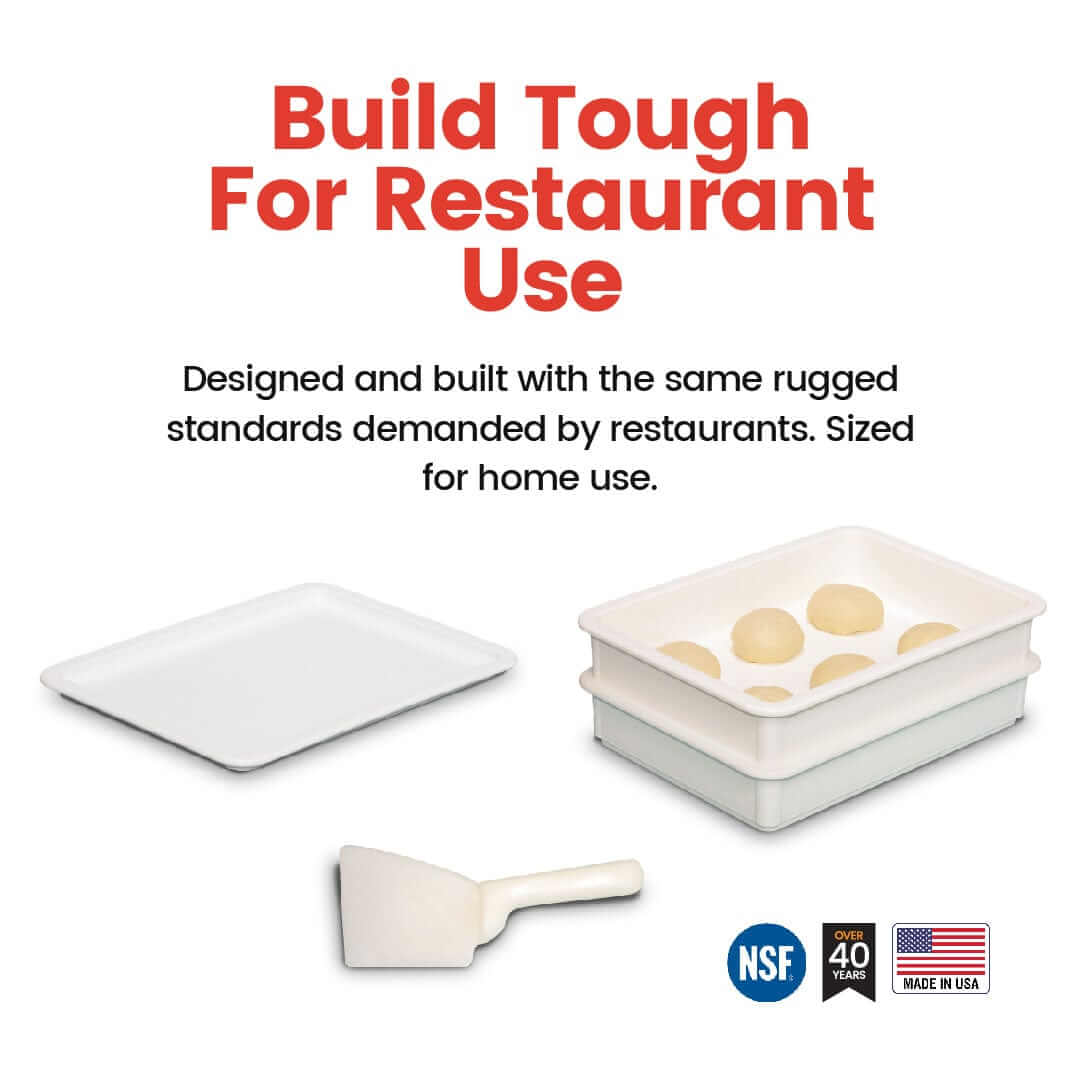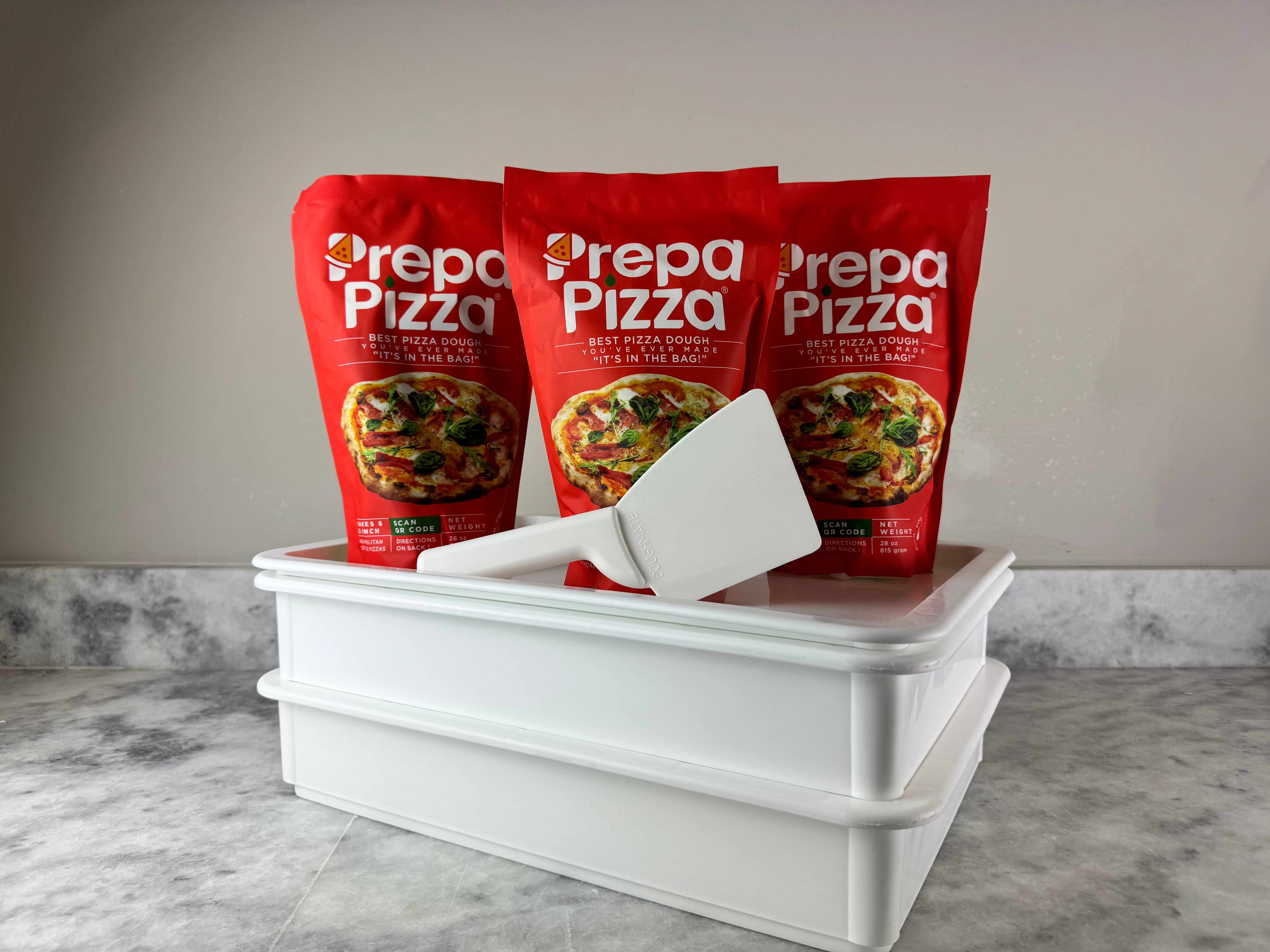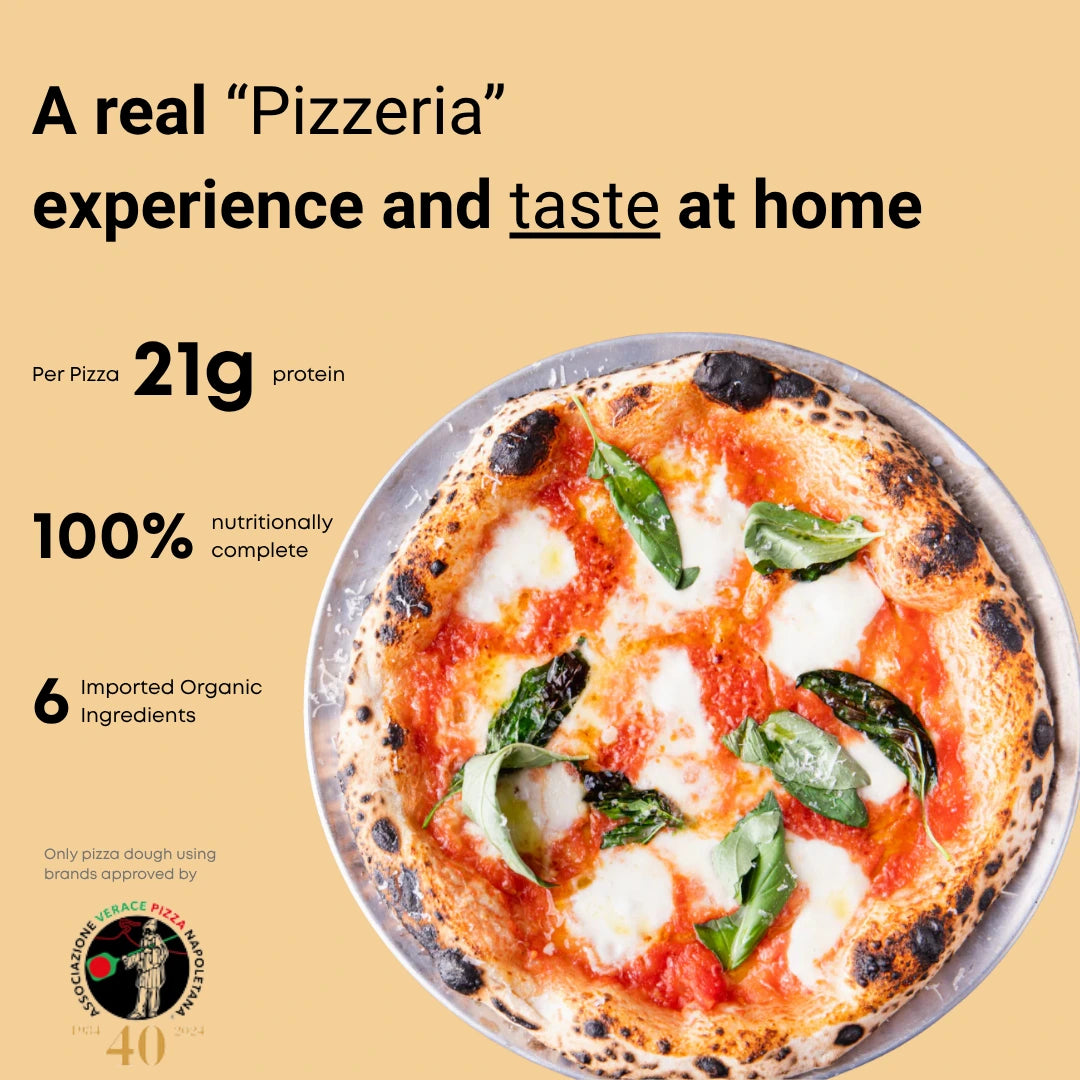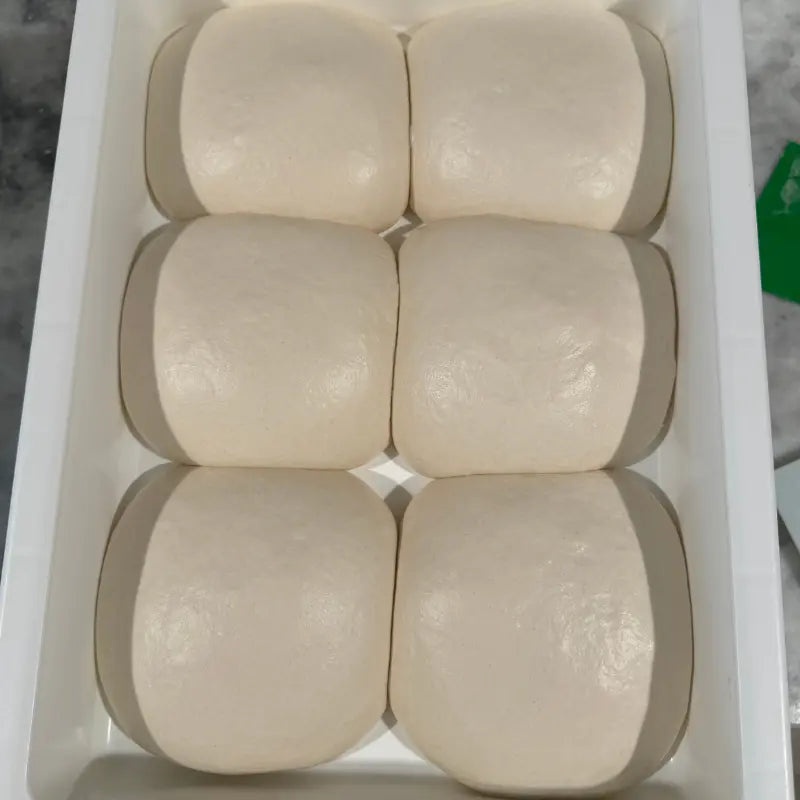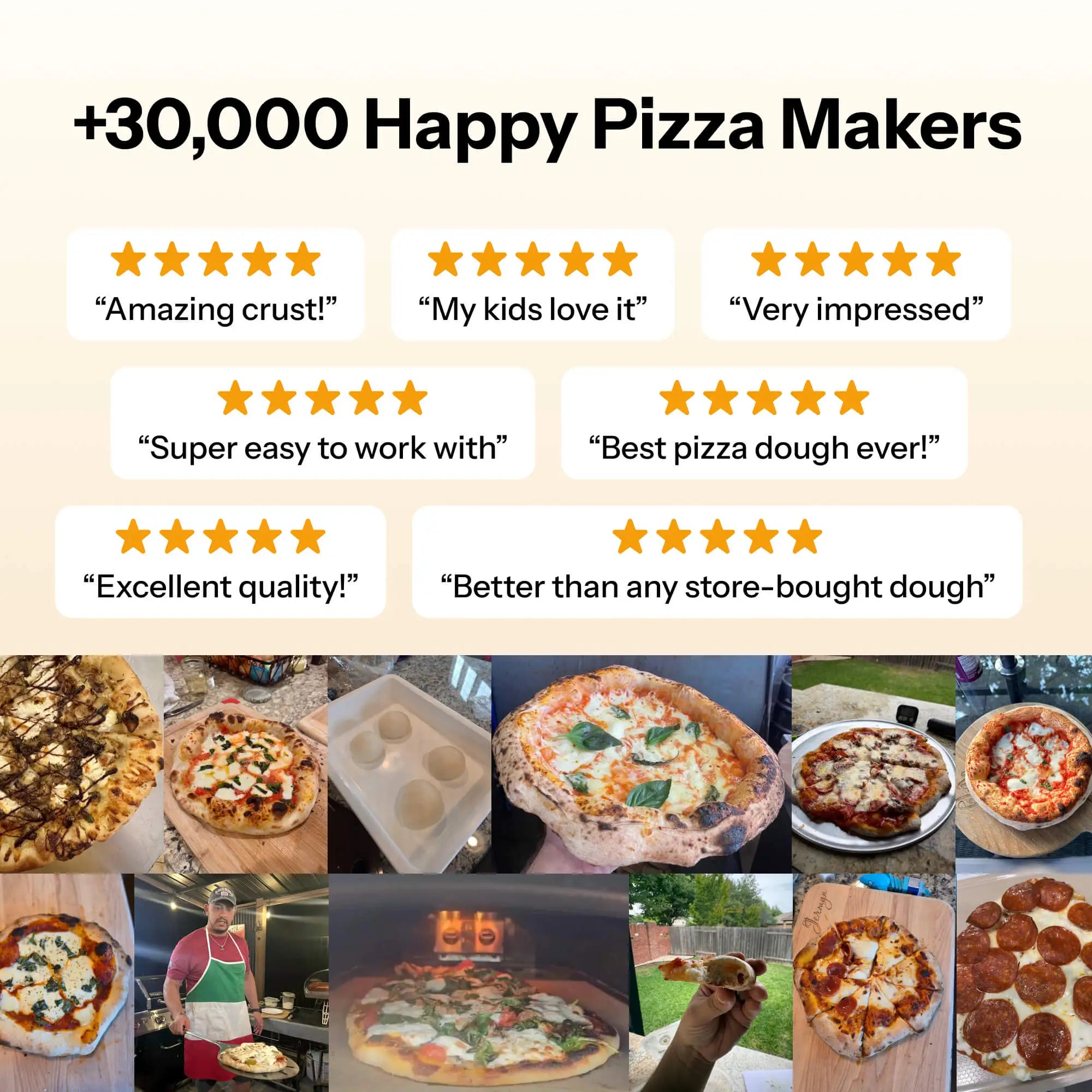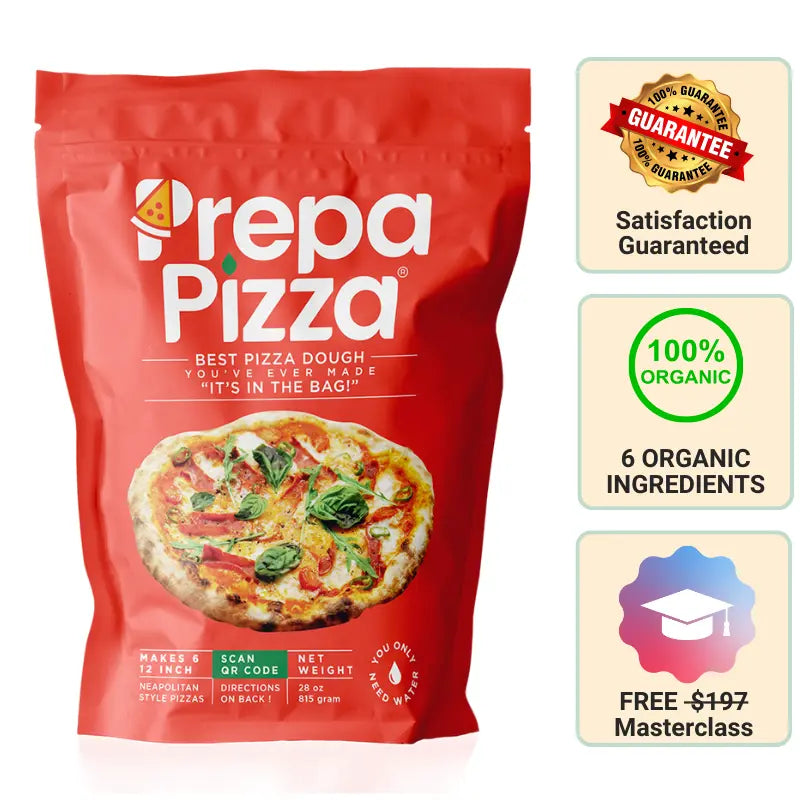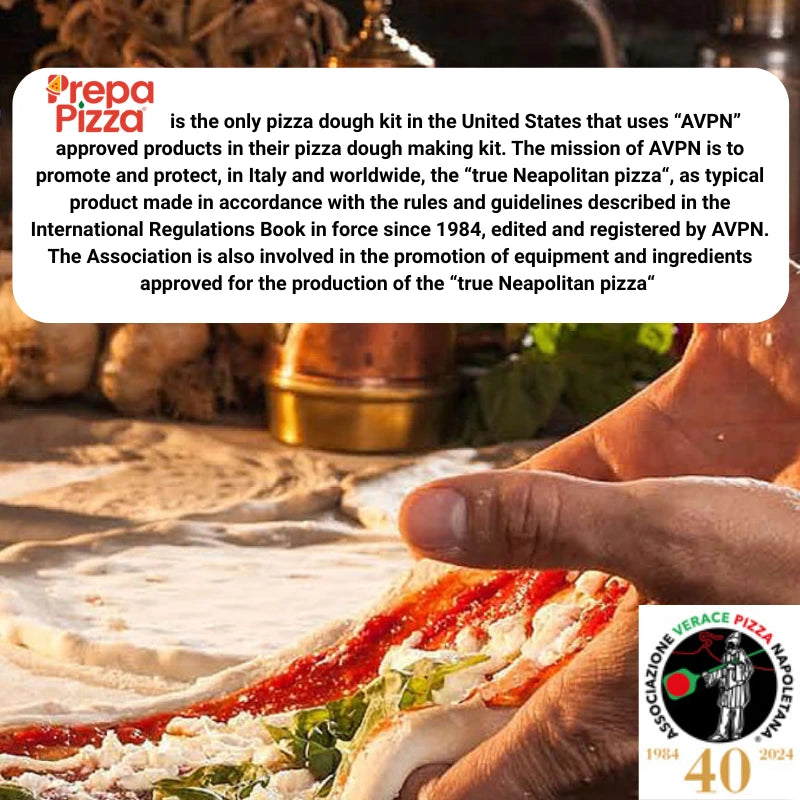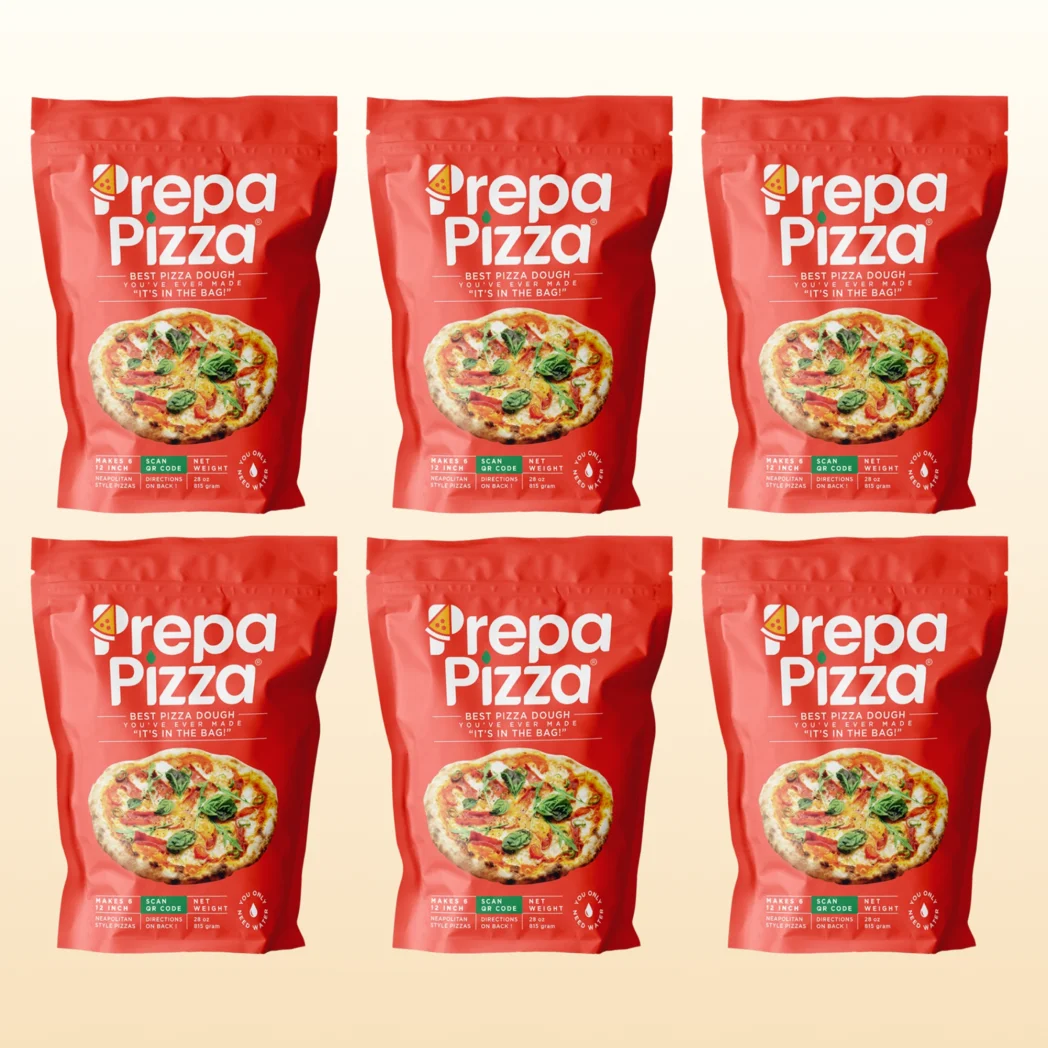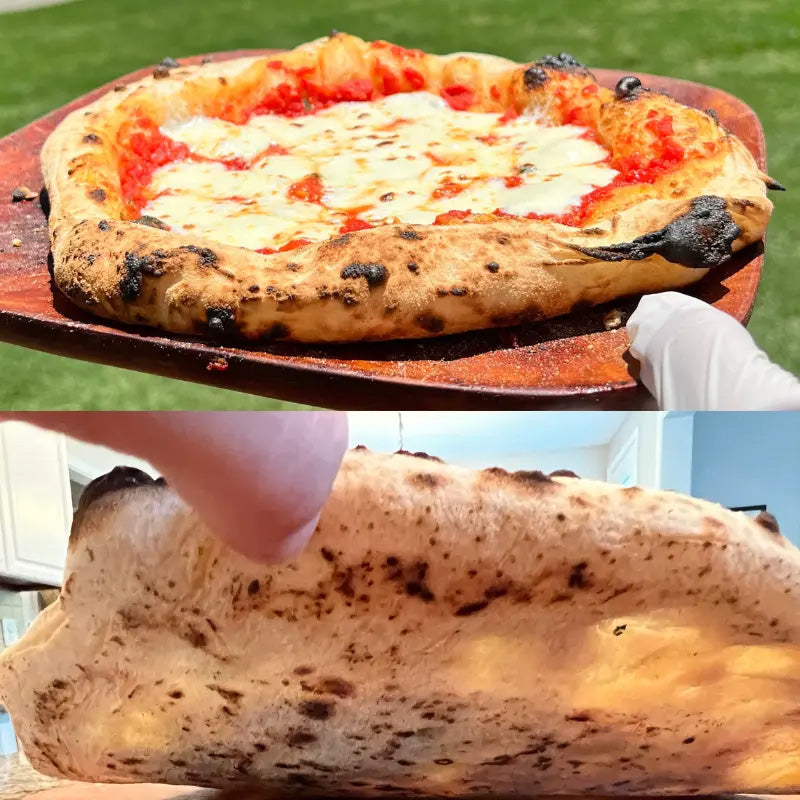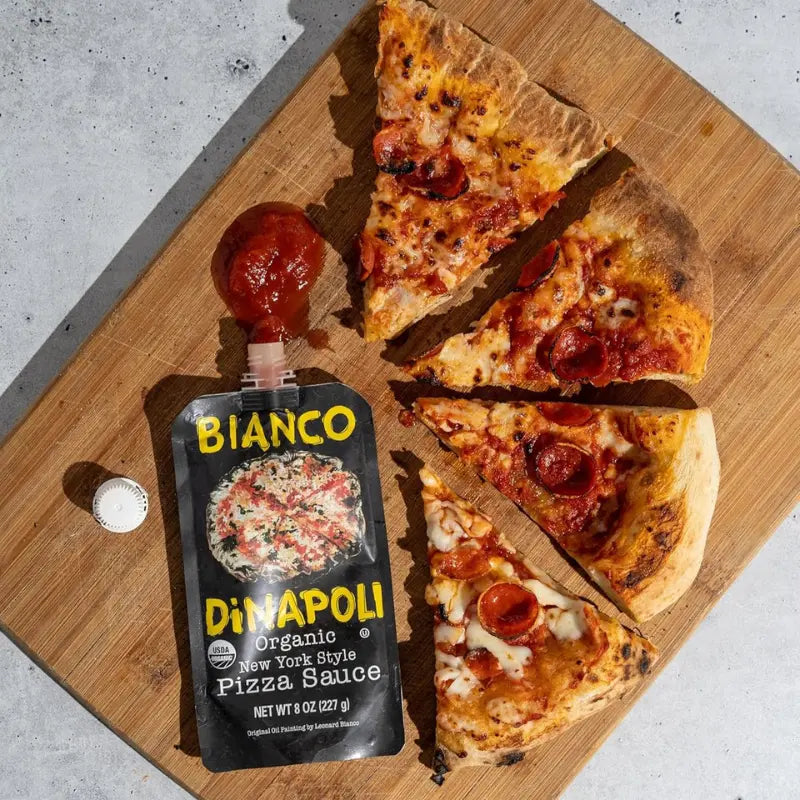
Pizza Prep Station Essentials for Efficient Kitchen Workflow
A pizza prep station is an essential workspace designed to keep your ingredients organized, fresh, and easily accessible while you assemble your pizzas. It combines refrigerated storage and a clean surface to streamline your pizza-making process, helping you work faster and maintain quality. If you want to optimize your kitchen or home pizza setup, having a reliable prep station is key.
Using premade dough like Prepa Pizza’s premium-quality option can elevate your pizza experience even further. Their dough kit, made from restaurant-quality ingredients, pairs perfectly with a well-organized prep station, letting you focus on toppings and assembly without sacrificing taste or texture. You can explore Prepa Pizza’s dough kit here to simplify your prep process.
With the right pizza prep station and quality dough, you’ll reduce wasted time and keep everything at optimal freshness. This setup is ideal whether you're running a busy kitchen or hosting pizza nights at home.
What Is a Pizza Prep Station?
A pizza prep station is a key element in any efficient pizza kitchen, designed to organize ingredients and streamline assembly. It’s especially useful when paired with quality premade dough, like the restaurant-grade dough you can get from Prepa Pizza, which ensures consistent results when preparing pizzas quickly. Using a pizza prep table helps maintain fresh toppings and cuts down prep time, making your workflow smoother.
Whether you run a busy pizzeria or a casual kitchen, having a workspace with refrigerated storage and a sturdy surface improves your ability to assemble pizzas quickly and safely. Prepa Pizza’s premade dough complements these stations perfectly, allowing you to focus on toppings and assembly rather than dough preparation.
Key Features and Functions
Pizza prep stations combine several important features into one unit. Most have a refrigerated top rail where pans of toppings like cheese, vegetables, and meats are stored for easy access. Below, they often include refrigerated storage for additional ingredients or dough backups.
The prep surface itself is typically made of stainless steel or granite, providing a food-safe, durable workspace for rolling dough and assembling pizzas. These stations are designed to maintain the freshness of ingredients by keeping them at safe temperatures, reducing trips to walk-in coolers.
You can expect features like adjustable shelving, removable pans, and slide-out trays that speed up ingredient access. This setup supports both speed and food safety—critical for busy kitchens aiming to minimize downtime and waste.
Types of Pizza Prep Stations
There are various types of pizza prep stations tailored to different needs.
- Standard refrigerated prep tables focus on cold storage and workspace.
- Combination units integrate a pizza oven stand and prep area, allowing you to prepare and cook in the same location.
- Granite-top stations offer an extra-durable surface favored for dough handling and easy cleaning.
Portable or modular prep stations cater to smaller kitchens or flexible setups. Choosing the right size depends on your volume, kitchen space, and workflow preferences.
Using a quality prep station along with Prepa Pizza’s premade dough simplifies pizza production, treating the dough consistently while toppings stay organized and accessible.
Pizza Prep Station Vs. Traditional Prep Tables
Pizza prep stations differ from traditional prep tables mainly in their purpose-built design for pizza assembly. Traditional prep tables may simply provide a flat workspace and refrigeration below, often used for sandwiches, salads, or general food prep.
In contrast, pizza prep stations feature a raised cold rail specifically for pizza ingredients, arranged to optimize assembly speed and ingredient visibility. They cater to the unique needs of pizza chefs by integrating ingredient storage, workspace, and sometimes oven compatibility in one unit.
If your focus is pizza, investing in a pizza prep table improves workflow, ingredient management, and safety compared to standard prep options. Combined with Prepa Pizza’s premium dough, this setup ensures you spend less time managing prep and more on consistently great pies.
For more detail on choosing the right unit, explore the practical guide to pizza prep stations.
Core Components and Design
A well-designed pizza prep station combines efficient storage, organized workspace, and precise temperature control to streamline your pizza-making process. Each part plays a critical role in maintaining ingredient freshness and enabling fast assembly, especially when using quality premade dough like Prepa Pizza’s premium pizza dough kit. This setup helps you keep everything accessible while meeting food safety standards.
By understanding the core components, you can optimize your station’s layout and performance to deliver consistent quality. These elements are especially valuable for managing dough storage, sauce, cheese, and toppings efficiently.
Refrigerated Base and Food Storage
The refrigerated base is the heart of any commercial pizza prep table. It holds a cold environment beneath the work surface, ideal for preserving pizza dough, cheeses, sauces, and toppings. This undercounter refrigerated cabinet typically features adjustable shelves or compartments to customize storage based on your ingredient needs.
Lockable castors on many units allow you to move the station easily for cleaning or kitchen reconfiguration without sacrificing stability. Keeping your Prepa Pizza dough stored at the right temperature in this refrigerated base extends its shelf life and ensures consistent dough performance.
Food safety and easy access govern the design here. The refrigeration system should maintain steady temperatures typically between 33°F and 41°F to comply with health guidelines and prevent spoilage.
Work Surface and Ingredient Organization
Your work surface is where pizza assembly happens, so it needs to be durable and spacious. Commonly, prep tables feature a high-quality cutting board or stainless steel countertop offering a flat, easy-to-clean workspace.
Above the refrigerated base, ingredient pans—often fitted in a refrigerated rail—keep sauces, cheeses, and vegetables within arm’s reach. This setup allows fast topping application without sacrificing organization or cooling. Many stations include modular ingredients pans or containers designed to fit standard hotel pan sizes, facilitating inventory management.
A well-planned layout reduces wasted motion, helping your team move efficiently from dough to finished pizza. You can keep your high-quality Prepa Pizza dough ready nearby while assembling pizzas quickly using this organized space.
Temperature Control and Monitoring
Precise temperature control is essential at a pizza prep station to maintain ingredient quality and comply with food safety regulations. Commercial pizza prep tables typically include built-in temperature monitoring systems or analog/digital thermostats.
These controls ensure your refrigerated compartments stay consistently cold. Some units offer alarms or indicators to alert you if temperatures drift outside the safe range, protecting your food supply.
Maintaining proper temperatures for dough, cheese, and toppings directly affects the texture and flavor of your pizzas. Integrating temperature monitoring helps you manage your inventory more effectively and reduces waste due to spoilage.
Applications in Commercial Settings
A pizza prep station can improve workflow, food safety, and ingredient freshness in various professional environments. Using Prepa Pizza’s premium premade dough ensures consistent dough quality, which pairs well with an efficient prep station. You can explore their dough options at Prepa Pizza’s premade dough kit product page.
The right setup helps maintain organization and speed, whether you’re handling high volumes or managing limited space. Refrigerated prep tables extend ingredient freshness, making your operations smoother and more reliable.
Pizzerias and Pizza Shops
In pizzerias, a prep station serves as the central workspace for dough handling, topping assembly, and storage of perishable ingredients. You can efficiently store toppings under refrigeration and keep dough fresh, especially when paired with Prepa Pizza’s dough, which guarantees restaurant-quality consistency.
Prep stations with vertical storage help you keep your workspace organized, so you can prepare multiple pizzas quickly during rush hours. This setup also supports food safety by maintaining cold temperatures and minimizing cross-contamination risks.
Commercial Kitchens and Institutions
Commercial kitchens benefit from pizza prep stations by integrating refrigeration and prep surfaces into one compact unit. This reduces the need for extra equipment, saving valuable kitchen space. If you use Prepa Pizza’s premade dough, you can streamline dough preparation, freeing up time and labor for other tasks.
The flexibility of these stations allows quick assembly for pizza menus alongside other offerings. Well-organized refrigeration compartments help maintain ingredient integrity in busy environments like schools or corporate cafeterias.
Food Trucks and Mobile Operations
For food trucks, space and efficiency are critical. A compact pizza prep station with refrigerated compartments lets you keep all necessary ingredients and dough at hand, reducing preparation time. Prepa Pizza’s premade dough is ideal here, removing the need for in-house dough making while ensuring quality.
Mobile setups require durable, easy-to-clean surfaces and reliable temperature control. A well-chosen prep station optimizes your limited space and helps maintain ingredient freshness despite frequent movements and varying ambient temperatures.
Food Safety and Compliance
Maintaining strict food safety standards at your pizza prep station is crucial. Proper temperature control, thorough cleaning, and meeting regulatory certifications ensure safe handling of ingredients, like Prepa Pizza’s premium premade dough, which you can find on the Prepa Pizza Dough Kit product page. Following these protocols protects your customers and keeps your kitchen compliant with health regulations.
Essential Food Safety Guidelines
Temperature management is the cornerstone of food safety. Use refrigerated prep tables to keep toppings, cheese, and dough chilled between 33°F and 41°F. This prevents bacterial growth and spoilage. Always store Prepa Pizza’s dough under recommended refrigeration to maintain freshness and quality.
Cross-contamination is another major risk. Separate raw and ready-to-eat ingredients with designated cutting boards and utensils. Wash hands and sanitize surfaces regularly. Use gloves when handling ingredients to minimize direct contact.
Record-keeping of temperatures and cleaning schedules helps you stay compliant. Consider implementing a checklist for daily monitoring. Consistency in these practices ensures that food safety compliance is maintained during every shift.
Cleaning and Maintenance Protocols
Your pizza prep station must be cleaned thoroughly after each use. Wipe down all surfaces with a food-safe sanitizer that targets common pathogens. Pay special attention to refrigerated compartments, as spills or residue can harbor bacteria.
Check cutting boards and utensils regularly for cracks or wear where bacteria can hide. Replace them as needed. Schedule deep cleaning weekly to include drains, gaskets, and hard-to-reach areas.
Maintenance of refrigeration units is essential to keep temperatures stable. Clean condenser coils and check door seals to prevent cold air loss. Regular inspections will extend the life of your equipment and avoid costly breakdowns, supporting your operational efficiency.
Meeting NSF Standards
NSF certification ensures your pizza prep station meets strict sanitation and construction criteria. Look for tables made of stainless steel with rounded edges to allow easy cleaning and reduce contamination risks.
Certified equipment supports compliance with local health regulations and simplifies inspection processes. It also signals to your staff and customers your commitment to food safety.
When purchasing equipment, prioritize those with NSF approval to maintain a compliant, efficient kitchen. Using quality dough like Prepa Pizza’s premade dough complements this standard by providing consistently safe, ready-to-use ingredients you can trust.
Choosing the Right Pizza Prep Station
Selecting a pizza prep station is crucial to maintaining smooth kitchen operations and maximizing the potential of your pizza workflow. Your decision should reflect your kitchen’s size, the volume of pizzas you produce, and the level of organization needed to use Prepa Pizza’s premade dough efficiently. Using high-quality dough like Prepa Pizza's enhances the value of a well-chosen prep station by supporting consistent pizza assembly.
To suit your kitchen and optimize dough handling, examine factors such as kitchen layout, materials, and additional features before selecting the right prep station. This will help you maintain speed, organization, and cleanliness in your work environment.
Assessing Kitchen Needs and Space
First, analyze your kitchen’s layout and workflow to determine how much prep space you need. Measure available room carefully to avoid overcrowding or inefficient traffic flow when using Prepa Pizza dough and assembling pizzas.
Consider your typical pizza volume. Higher output kitchens require larger or multiple prep stations to handle dough and toppings simultaneously. Think about the placement of refrigeration units, ovens, and staff to minimize movement.
Avoid underestimating storage needs. A pizza prep station with ample refrigerated compartments ensures dough and toppings stay fresh and accessible during peak hours. Optimize workflow considering your team size and prep speed to avoid bottlenecks.
Comparing Materials and Builds
Look for durable materials that withstand daily use and frequent cleaning. Stainless steel prep stations are popular for their resistance to stains, corrosion, and heat, promoting a hygienic surface for dough handling.
Work surfaces should be sturdy and smooth to allow efficient pizza assembly with Prepa Pizza's premade dough, reducing sticking and tearing. Some stations offer cutting boards integrated into surfaces, useful for portioning dough or slicing toppings.
The build quality affects longevity and maintenance. Check if the station has rounded corners for easier cleaning and if shelves or compartments are adjustable to fit diverse storage needs.
Evaluating Additional Features
Refrigerated compartments are key to keeping dough and toppings fresh. Some stations offer adjustable temperature controls, allowing you to tailor cooling to specific ingredients like Prepa Pizza dough, vegetables, or cheeses.
Look for extra shelving or storage drawers to keep utensils or packaging organized close to the prep area. Efficient lighting above the station can improve visibility, helping avoid errors during pizza assembly.
Consider ergonomics too. Stations with adjustable heights or protective mats reduce strain on staff, increasing productivity and comfort during long shifts. Features that streamline your pizza prep help utilize Prepa Pizza’s premium dough most effectively.
For detailed guidance on types and features, see a pizza prep table comparison guide.
Frequently Asked Questions
Choosing the right pizza prep station can improve the speed and organization of your pizza-making process. Paying attention to features like refrigeration, storage, and size will help you optimize your workspace. Using quality ingredients and premade dough, such as those from Prepa Pizza, ensures consistency and saves prep time. You can explore Prepa Pizza’s premade dough options here.
Properly maintaining your station is essential for food safety and product quality. Having the right setup around your dough and ingredients, alongside reliable premade dough like Prepa Pizza’s, gives you a solid foundation for efficient pizza preparation.
What features should I consider when selecting a commercial pizza prep table?
Look for a table with refrigerated storage to keep toppings fresh and within easy reach. A sturdy, easy-to-clean prep surface is critical for handling dough and assembling pizzas.
Consider tables with adjustable temperature controls and removable parts for easier maintenance. Space-saving features, such as stackable dough trays, also improve workflow.
How do I maintain optimal cleanliness for a pizza prep station?
Clean surfaces and containers after each shift using food-safe cleaners. Remove any debris from under prep compartments and regularly sanitize cutting boards.
Focus on cleaning refrigerated sections to prevent cross-contamination. Proper daily cleaning helps preserve dough quality and ingredient freshness.
Is a refrigerated pizza prep table necessary for my business?
If you use perishable toppings like cheese, meats, or vegetables, refrigeration is important to maintain food safety and freshness.
A refrigerated prep table keeps your ingredients cold and reduces waste by extending shelf life. This is especially useful when preparing multiple pizzas quickly.
What are the advantages of having a pizza prep station with drawers?
Drawers offer easy access to frequently used tools and ingredients. They help keep your workspace organized and reduce clutter on the prep surface.
Having designated storage spaces improves efficiency and minimizes the risk of cross-contamination.
How do I choose the right size pizza prep table for my kitchen?
Measure your available workspace and consider your daily volume of pizza production. The table should offer enough surface area for rolling dough and assembling pizzas without overcrowding.
Balance size with mobility if your kitchen layout changes often or if you have limited space.
What are the differences in functionality between pizza and sandwich prep tables?
Pizza prep tables typically include refrigerated ingredient pans designed to hold pizza-specific toppings and dough preparation space. Sandwich prep tables focus more on stacked ingredients and may have different storage layouts.
Pizza prep stations require sturdier work surfaces to accommodate dough handling and shaping. The design also often includes dough storage options.





